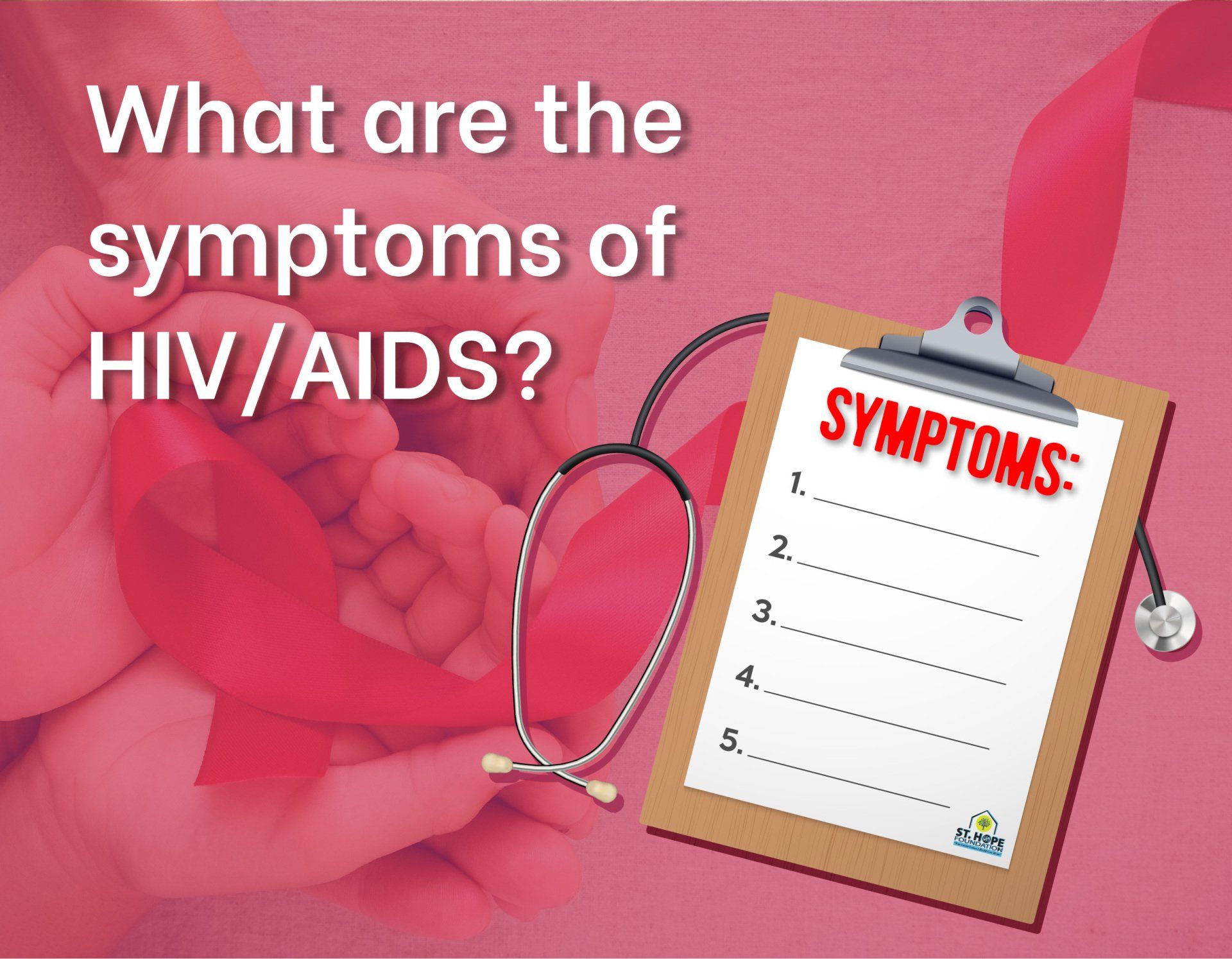Recent Posts
What Are the Symptoms of HIV and AIDS?

Human immunodeficiency virus (HIV) has been passed among humans for decades. The virus attacks the cells in the body that fight off infections and can lead to the development of acquired immunodeficiency syndrome (AIDS), a severe stage of HIV during which the body’s immune system shuts down.
Unfortunately, there is still no cure for HIV or AIDS, making it a lifelong health struggle for sufferers across the world, including many in Houston. According to HIV.gov, 1.2 million Americans have HIV. An estimated 13 percent of those people don’t know they have HIV.
Knowing you have HIV is the first step in preventing the virus from spreading or progressing to AIDS.
How Do I Know If I Have HIV?
HIV is difficult to detect in the first stages because not everyone has symptoms. Those that do can still have difficulty recognizing them as HIV because they are very similar to symptoms of a cold or the flu. Early HIV symptoms might include:
- Fever
- Chills
- Muscle aches
- Sore throat
- Fatigue
- Night sweats
- Rash
- Swollen lymph nodes
- Mouth ulcers
The Three Stages of HIV-AIDS
Stage 1 of HIV
These symptoms are experienced within two to four weeks of infection and can last a few days or several weeks. Not all the early signs of HIV are experienced at once. Some people who have recently been infected only have one or two of the symptoms.
This first stage of the virus is referred to as acute HIV infection. People are very contagious in this stage of infection because there is a large amount of HIV in their blood. The only way to know if you have it, however, is to get tested. If you suspect you have been exposed, it is important to get tested and be properly diagnosed, even if you do not have any of the symptoms.
Stage 2 of HIV
The second stage of the virus is known as a Chronic HIV Infection. In this stage HIV is reproducing at very low levels. There may also be few to no symptoms of sickness at this time, but taking medication at this stage is crucial. The second stage can last 10 years or longer and the virus can progress much quicker after this stage. The goal should be to stay in this stage for as long as possible. Taking medication can prevent HIV from moving into stage three.
If not treated, the HIV concentration in the patient’s blood will go up and the CD4 cell count, otherwise known as white blood cells (the cells that fight infection), goes down. Without these cells, your immune system is weakened, which makes it more difficult for your body to fight the HIV and other illnesses.
Stage 3 of HIV-AIDS
The last stage of HIV is known as AIDS. It is the most severe phase of the virus since a patient’s immune system is nearly depleted. People with AIDS are highly susceptible to illnesses of all kinds.
Medical professionals consider HIV to have progressed to AIDS when a patient’s white blood cell count drops below 200 cells/mm. A patient may also get one or more opportunistic infections (OIs) that accelerate the degradation of the body.
Once diagnosed with AIDS, the infected patient has a significantly decreased life expectancy. Life expectancy without treatment is approximately three years, depending on the severity of the CD4 cell count. However, undergoing regular antiretroviral therapies allows some people with AIDS to live fairly healthy and normal lives.
If I Have HIV Will I Get AIDS?
With the help of medication, most people with HIV do not develop AIDS. Being diagnosed in the early stages is crucial so that you can be properly prescribed antiviral treatments that can prevent the progression and spread of the virus.
Is HIV Contagious?
HIV is contagious if not managed at all three stages. The virus is in your blood and can be transmitted to others through:
· Unprotected sex
- Sharing needles
- Pregnancy from mother to baby
- Breastfeeding
- Birth
- Contaminated blood transfusions
Using condoms and avoiding used syringes can help prevent infection. If you suspect that you have been exposed to HIV, it is vital you get tested so that you avoid spreading it to others.
Who Is Most Likely to Get HIV?
According to the CDC, African Americans made up 42 percent of new HIV cases in 2018. Hispanics and Latinos are the second group of people most frequently affected by HIV at 27 percent of new cases.
It also affects people differently based on their sexual orientation. The CDC reported male to male sexual contact made up the largest cause of spread at 66 percent in the United States as of 2018. In comparison, only 23.8 percent were infected by HIV from heterosexual contact.
HIV is also more prevalent in certain parts of the country. Currently, the South has the highest number of people infected with HIV, but the Northeast has the highest rate of infection based on population size.
HIV is a worldwide disease. HIV and AIDS can be traced back to the 1920s according to Avert, a resource for global information and education on HIV and AIDS. It did not become very well known until the 1980s during the AIDS epidemic.
There is no cure for HIV or AIDS, but there are antiviral treatments that can keep it at bay.
Living with HIV isn’t easy, but having the right physician can make living a long, comfortable life possible for many HIV-AIDS sufferers. St. Hope specializes in
HIV prevention services and
HIV specialty care.
If you have been diagnosed, our doctors can help you create a plan so you can get the medical attention you need and still live a full and active lifestyle.









